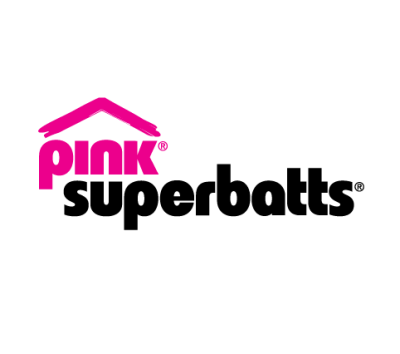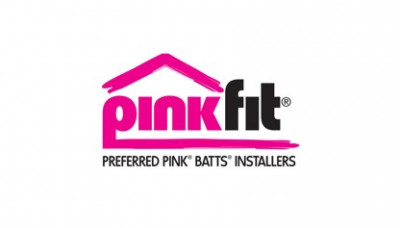
Hit enter to search or ESC to close
Choosing right insulation
Insulation advice generator
Find your perfect match
Like a new home itself, insulation’s not a one-size-fits-all purchase. Let us help you find the perfect match for your home & family requirements.
Areas to insulate in your home
The best insulated home is one that is fully insulated – from top to bottom.
- Roof: Heat rises, so the roof is where most of the heat vanishes in your home and generally a straightforward area to insulate. If your ceiling is insulated but the wooden beams (joists) are still visible, we recommend installing another layer of insulation on top of the existing one.
- Between floors: Insulate for warmth between floors. To reduce noise transmission use Pink® Batts® Silencer® insulation. Best done during the build or renovation because retrofit is difficult between floors.
- Walls: Walls are more difficult to retrofit as wall linings need to be removed. If you are planning a big home renovation, consider installing insulation at the same time. And think about Acoustic insulation in internal walls to reduce noise. Disturbances from stereos, appliances and voices can all be reduced through acoustic insulation improvements.
- Hot water cylinder (for older homes): Heating a home’s hot water makes up one-third of the average power bill. Insulating your homes hot water cylinder with Pink® Batts® hot water cylinder wrap is a quick and easy way to make a difference to your energy usage.
- Floors: In houses with damp basements or ground soil, an on-ground moisture barrier like polyethene reduces dampness rising through the floorboards. And Pink® Batts® SnugFloor® insulation decreases heat loss through floors.
Tips specific to homes of different eras
Pre-1950s house
Houses built before the 1950s, such as villas, bungalows and state houses, were not usually insulated. Fitting insulation is usually straightforward as these houses tend to have high roof spaces and easy access to under floor areas. Access to wall spaces is difficult. Install Pink® Batts® wall insulation when renovating.
1950s to 1970s house
Before 1978 houses were not required to be insulated, so insulation was not common.
The characteristic flat roofs of 1960s houses pose challenges for fitting ceiling insulation.
Access to wall spaces is difficult. Install Pink® Batts® wall insulation in spaces between walls when renovating. Access to underfloor spaces is different between houses. If accessible, use Pink® Batts® SnugFloor® under floors.
1980s to mid-1990s house
These houses often have some insulation and need topping up for more effective insulation. Draughty wooden floors call for Pink® Batts® SnugFloor® insulation under floors.
Mid-1990s to 2000s house
Mandatory insulation requirements mean houses of this era are well insulated.
As insulation has a huge impact on a home’s warmth and comfort, it’s worth fitting insulation of a higher grade (more effective) than the minimum required. With good wall insulation ventilation is important as the air-tight nature inhibits natural air flow.
2009 to current houses
The Building Code changed in 2009, requiring higher levels of insulation than for houses built before this. Your home should be insulated to the current building code, however if it is to the minimum requirements you can increase your insulation levels to increase your benefits.
Rental Property
The Healthy Homes Standards (HHS) increases the minimum requirements for existing insulation in rental properties. All private rentals need to comply within 90 days of any new or renewed tenancies after 1 July 2021.
Go beyond minimum for extra comfort and health benefits
Insulation is the single most effective measure you can take to keep your home warm and preserve energy. A well-insulated home is warmer, healthier and more pleasant for you and your family. According to a Wellington School of Medicine survey**Families living in insulated homes had fewer sick days and doctor visits.
An inadequately insulated house can negatively affect your health. Indoor temperatures below 16°C increase the risk of respiratory disease. Living in a cold, damp home is bad for your health.*** The World Health Organisation recommends that indoor temperatures should be at least 18°C for healthy living and at least 22°C in homes with young children. Research shows that people living in houses which are colder than 16°C are more likely to suffer respiratory illnesses than those living in warmer homes.
*Fung.J.'SR 230- Higher than NZBC Thermal Insulation in New Housing Cost-Benefit Analysis' BRANZ Report 2010.
** Howden-Chapman, P. et al. "Effect of insulating existing houses on health inequality: cluster randomised study in the community" British Medical Journal, 2007, p.334:460
*** Howden-Chapman, P. et al. "Effect of insulating existing houses on health inequality: cluster randomised study in the community" British Medical Journal, 2007, p.334:460
The higher the R-value of the insulation the better it performs. Try to install insulation with the highest R-values as possible. Insulation increases long-term energy and cost savings, as well as providing greater comfort for occupants in all seasons- warm in winter and cool in summer.
When building a new home, the level of insulation is specified at the planning stage. We recommend going beyond the minimum requirements. The small extra up-front cost versus the long-term saving makes it a smart decision that will pay for itself.



